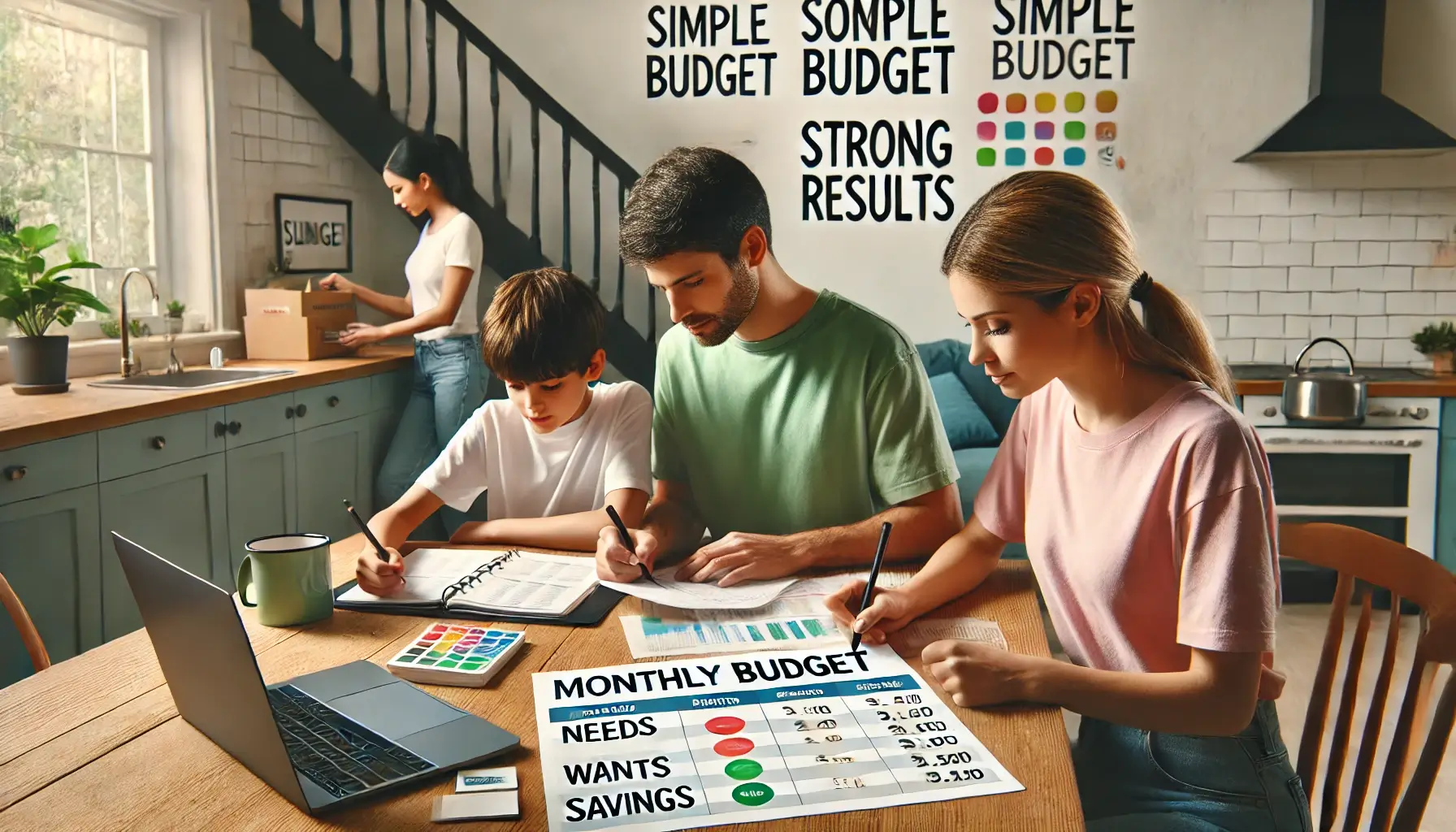Budgeting doesn’t have to be complicated. In fact, the simpler your system, the more likely you are to stick with it. Many families abandon their budget not because they don’t care — but because it feels too hard to maintain.
The good news? You can have a clear, effective family budget that supports your goals without spreadsheets overload, countless categories, or daily stress.
Here’s how to simplify your family budget — and still stay totally in control.
1. Focus on the Essentials
Start by reducing your budget to just a few key categories.
Try this basic structure:
- Needs (housing, food, transportation, utilities)
- Wants (fun, entertainment, dining out)
- Savings & Debt Repayment
- Kids or Family Essentials (if needed)
Fewer categories = less overwhelm.
2. Use a Single, Central Budgeting Tool
Don’t spread your system across multiple notebooks, apps, and sticky notes.
Choose one tool:
- A spreadsheet
- A paper budget binder
- A budgeting app (like YNAB, EveryDollar, or Goodbudget)
Make sure it’s easy to use, accessible, and fits your lifestyle.
3. Set Spending Limits by Category, Not Every Line Item
Instead of tracking every tiny expense, set caps per category.
Example:
- Groceries: $600/month
- Dining Out: $150/month
- Kids’ Expenses: $200/month
This gives you flexibility within the limit — without micromanaging.
4. Automate What You Can
Automation reduces the number of tasks you have to think about.
Automate:
- Fixed bills (rent, utilities, subscriptions)
- Transfers to savings or debt payments
- Retirement or education contributions
The fewer things you have to remember = the easier budgeting feels.
5. Use Cash Envelopes or Prepaid Cards for Discretionary Spending
For flexible categories like groceries, fun, or dining out, use a simple method:
Options:
- Physical cash envelopes
- Prepaid debit cards (one per category)
- Budgeting apps with “envelope-style” tracking
When the money’s gone, you stop spending — no math required.
6. Schedule One Budget Day Per Month
Instead of constant check-ins, set aside one day to review and reset.
On your budget day:
- Look at last month’s spending
- Adjust any categories if needed
- Plan for the coming month
- Celebrate small wins
Consistency > frequency.
7. Create a Buffer for Flexibility
Life is unpredictable — your budget should reflect that.
Add a “miscellaneous” or “buffer” line, such as $100–$200/month. Use it for unexpected costs so you don’t have to constantly rebalance categories.
8. Use Visuals That Keep You Engaged
Simplicity doesn’t mean boring — it can still be fun!
Try:
- A whiteboard budget summary
- A progress chart for debt or savings
- Stickers, color coding, or magnet boards
- Digital widgets or phone lock screens with your goals
The easier it is to see your budget, the easier it is to follow.
9. Reevaluate Every 3–6 Months
Your budget doesn’t have to be perfect — it just needs to be workable.
Ask:
- What’s working well?
- What’s too complicated?
- What can I eliminate or automate?
- How can I make this easier?
Simplifying is an ongoing process.
10. Let Go of the “Perfect Budget” Idea
You’re not a robot. Life isn’t static. Some months will be messy — and that’s okay.
The real goal:
- Know where your money is going
- Stay aligned with your values and goals
- Make adjustments as needed
- Feel more confident, not more stressed
Simple, sustainable systems win every time.
Final Thoughts: Simple Budget, Solid Control
You don’t need more charts — you need more clarity. When your family budget is easy to use, it becomes a natural part of your routine, not a chore you dread.
So reduce, automate, and focus on what really matters. Because the simpler your budget, the stronger your financial habits will be.

